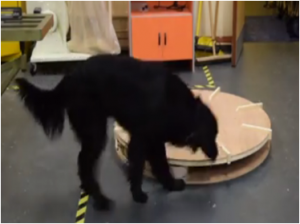How do you measure greediness?

This has been a really important question for us. Everyone tells us Labradors are really greedy, but how could we put a number on the kind of behaviour that owners and vets were so confident about? We think that many of the genes underlying obesity in dogs may affect their appetite. So it is important to be able to quantify that behaviour.
We first looked at what is done in other species. Human appetite can be tested by seeing how much people choose to eat at a buffet meal but larger-scale projects have used questionnaires.
An Eating Behaviour Questionnaire for Dogs
We were particularly interested in questionnaires for parents which had been shown to collect useful information about their children. So, with the late Prof Jane Wardle, GOdogs developed the DORA (Dog Obesity Risk Assessment) questionnaire.
The DORA questionnaire went through several rounds of validation and is a robust measure of how dogs behave around food. You can read the paper which describes the validation process in full by clicking on the link.
Measuring Eating in the Behaviour Laboratory
The next step was to develop tools for measuring eating behaviour in the laboratory. We are interested in how much dogs want food but also their food choices and other factors.

The wheel task (pictured above) was our first attempt at testing food motivation in dogs. The idea was that dogs could turn the top of the wheel to reveal food. We predicted greedier dogs would spend more time turning the wheel. But… it turned out that only about half the dogs learnt to work the wheel – rather than testing how hard a dog would work for food, we were testing whether they could work out how to use it. We have other, easier tasks that work better though!
GOdogs dogs are all pets so we have been working on validating simple tests which allow us to compare how much the dogs care about food. It’s not been easy as we’ve had to find tasks which are easy for dogs to understand, then measure them carefully. Many volunteers have participated – thank you to all of you!
We are still recruiting dogs for these experiments. If you have a Labrador or flatcoat retriever and are interested in taking part, please get in touch via our contacts page or send us an email.
A note on Prof Wardle
Jane Wardle was an distinguished behavioural scientist who died in 2015. Her enthusiasm for a rather left-field, doggy project developing the DORA questionnaire was much appreciated. During our brief relationship she gave every impression of being the all-round marvellous person her obituary suggests and it is a privilege to have worked with her.


